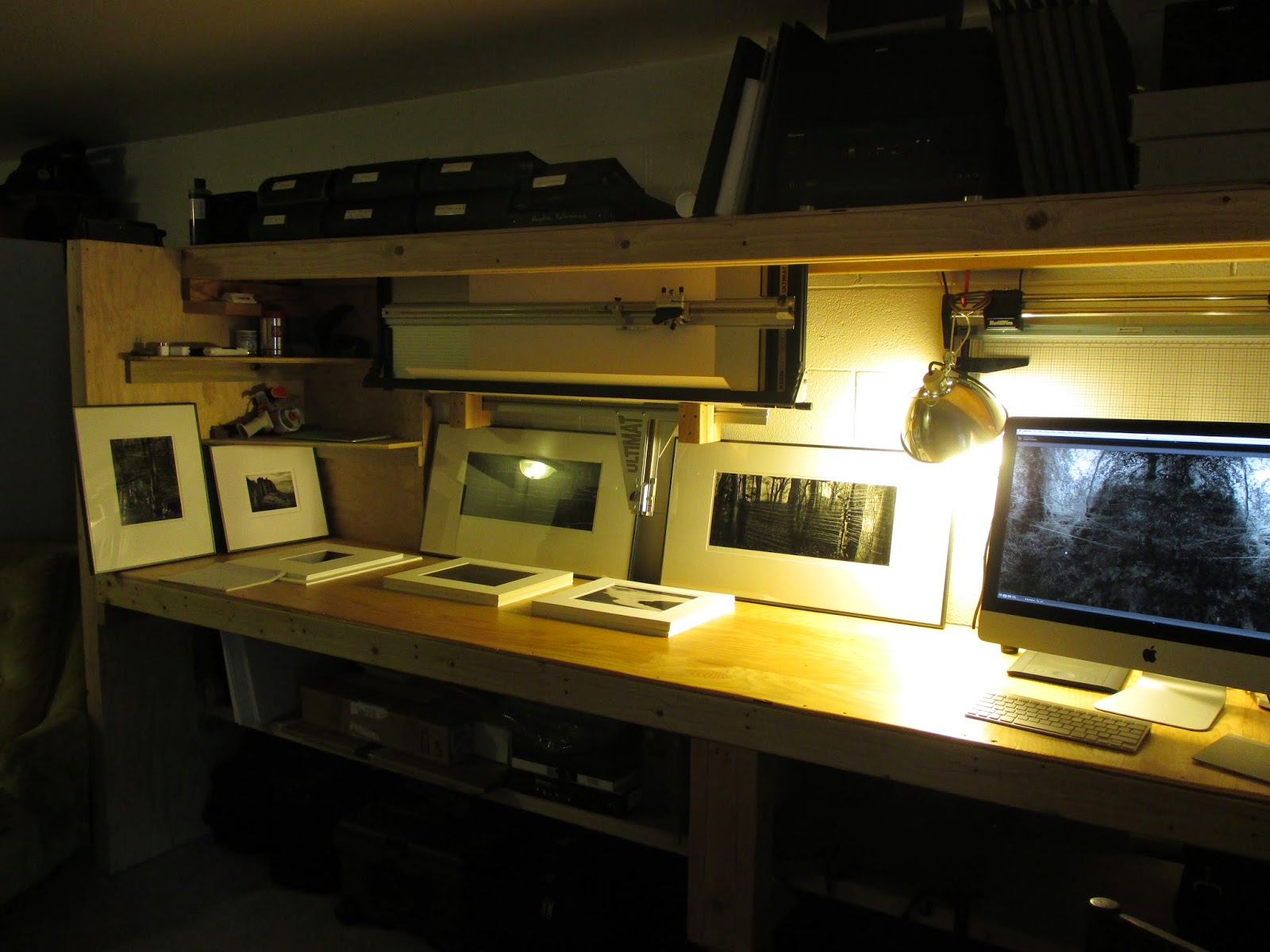Want a perfect recipe for abstraction?
Mix Video, Stumps, Dancers, CMYK, Painting and Circles.
Described as "the region's most exciting practitioner of abstraction," Paul Komada doesn't just approach a project like To Be Alone Together from one angle, but seems to examine such a task through a prism, with a colorful and multifaceted result.
Paul was given the diminutive and interchangable Doris Chase sculpture Ad Lib Moon to respond to with his work. It is a simple block of oak, carved into 5 circles that nest into each other and can be displayed apart or together (appropriately enough). Knowing that Paul bridges the art-craft divide in his world, including sculpture, painting, video, knitting and sewing (and probably much more), I eagerly anticipated my studio visit with him to see a magician's workshop in action.
Having a spacious and well-organized space in the TK Building in Pioneer Square, Paul and his family live and work at the hub of Seattle's art scene. In order to create a working studio for Paul within their home, they built a small room in one corner of the loft, what I call the Orchid Oasis. There was no painting actively happening in the space during my visit, but the floor is splattered and streaked with every color of paint. Along one wall were the knitted, framed works, in the center of the space was a large table with a sewing project for MadArt's MadCampus and along the entire back of the room were shelves upon shelves of orchids.
 |
| The Orchid Oasis |
We struck gold by giving Paul Doris Chase to work with. He immediately noted that he felt a kinship to her for a couple of reasons. First of all, being raised in Seattle for a portion of his childhood, he attended Roosevelt High School, the same high school attended by Chase. Second, despite being more well-known for her large sculptures, Paul was inspired by Doris's early work in video, since he, too, has been experimenting with the medium.
So how does that recipe go again? Dancers in circles. CMYK video. Painting stumps.
For a recent exhibition at Prole Drift, Paul stationed himself and his canvases in front of a green screen and painted on top of a collection of photographs as they moved into the screen. The images overlap in his painting as abstraction that has its origins in the landscape. The show received excellent press and not just for his experimental painting, but for his knitted paintings as well, which I nominated for a City Arts Artwalk award later that summer.
 |
| Formalist's Agony open studio at Prole Drift |
But back to the landscape. Like the rest of us Northwesterners, Paul is tied to this place and its ever-changing moving parts. We are hyper aware of our surroundings and when an old building is replaced by a new shiny one, we notice. Paul had been seeing stumps around Seattle and Vashon - stumps that are the remains of hundred year old trees that were chopped in an instant for new development. For To Be Alone Together, Paul took hundreds of photographs of these stumps and narrowed them down to a select few to use for his green screen painting method. The stumps relate to Doris's sculpture in materiality and texture.
The handy thing about a stump is that it is also a circle. Doris was clearly obsessed with the circle. They are ubiquitous in her work, so Paul decided to make the painting of the final stump one large circle, large enough that someone could fit inside the diameter of the circle if they walked right up to it. In Doris's video, Circles II, she has dancers outstretched in her circle sculptures rolling back and forth across the stage. This video was done in CMYK, so Paul decided to only use those four colors in his stump painting, with an allowance for white.
What we are gifted with at the end of this tightly knit creative process is a painting that is throbbing with color in innumerable layers. This may be crazy talk, but if Paul's painting was a portal, I would walk into that juicy circle of reds, yellows and blues and walk out the other side as one of Doris's dancers, wearing a sleek leotard and a bob haircut.
 |
| Paul working on 4 Chase, as depicted in this still from the video that accompanies the work in the exhibition |
Does Paul prefer to be alone, or together?
Decide for yourself by visiting his work and the rest of the exhibition before it comes down, January 4.
Can't get enough of Paul? Be sure to take a peek at his latest array of projects at http://www.paulkomada.com. For a delightful essay on Paul's work by Jim Demetre (with more views of him in his studio), visit the recently launched Vignettes website.























